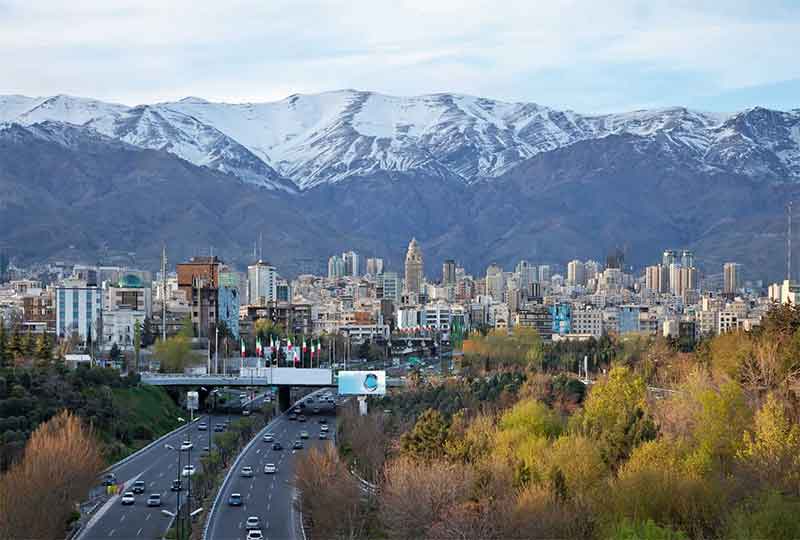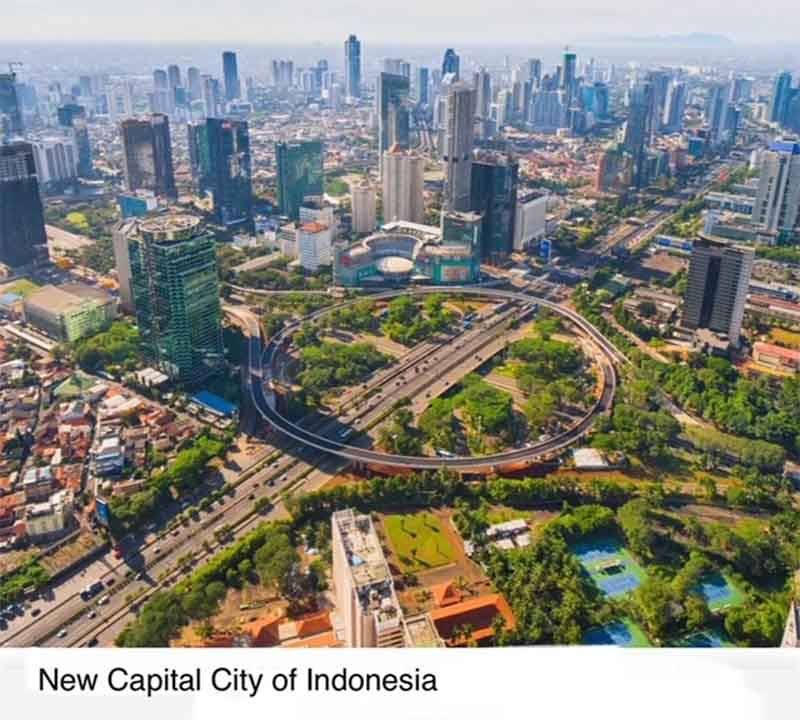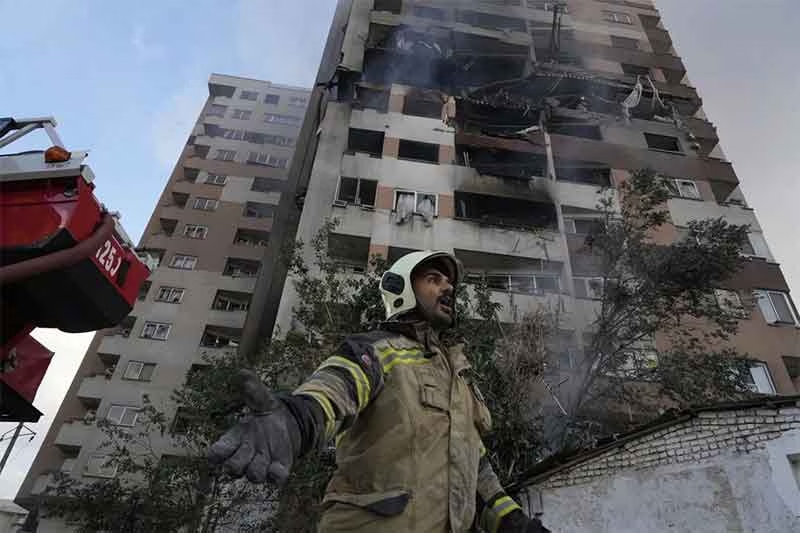
The first part of this article, published on 19/09/2024, contained background information and discussion of the experiences of the relocation of the capital city in some other parts of the world, especially in countries with similarities to Iran. Further, it included several lessons learned from those attempts. Here, in part two, I will discuss the pros and cons (positive and negative aspects) of a potential relocation of Tehran, the major metropolitan of Iran. Included in my discussion will be a perspective on how feasible and realistic the idea of relocation the capital of Iran maybe, even if there is real intention and not just pep talk about it.
Building a Case for Relocation of Tehran
Relocation of a capital city like Tehran can have a range of positive and negative aspects and consequences, depending on the context and goals of such a move. Here below is a breakdown of the pros and cons of the potential relocating Tehran, the capital of Iran:
A- Positive Aspects and Consequences
1- Reduced Traffic Congestion, Air Pollution, Population Density:
Traffic: Tehran is notorious for its traffic congestion. Relocating the capital could help alleviate traffic issues and reduce air pollution in the current city. Statistically, and according to government data, Tehran had only 15 days of clean air per year that are not unhealthy for the population, especially the elderly, children and residents with respiratory issues. Right after Jakarta, the capital of Indonesia, Tehran is the 7th most polluted city in the world.
Population Density: Tehran has a population of more than 13.5 million people, making it a very dense city with many problems as a result of that. With proper planning and implementation, moving the capital could relieve pressure on Tehran’s infrastructure and housing, allow adding the much needed green and open spaces and recreational facilities, and overall, improve the residents’ living conditions.
2- Balanced Regional Development:
Economic Growth: A proper relocation could promote more balanced economic and physical development across the country, and certainly the regions Tehran is and the new capital will be located. Such move can help to develop other regions and reduce regional disparities.
Infrastructure: By advance and proper planning, new investment in and actual creation of infrastructure could spur growth and modernization in a new capital region, leading to improved services and facilities for the inhabitants, an advantage that the majority of the existing residents of Tehran lack severely.
3- Strategic Considerations:
Security: A new location could potentially be chosen for strategic reasons, improving national security by placing the capital further from borders or vulnerable areas that are or can be subject to adversarial conditions. The recent history of Iran has clearly shown how unprotected that border cities and regions of Iran are or can be.
Geographic Benefits: The new location could be more centrally located or better suited to certain environmental conditions, such as being less prone to natural disasters. Included in the qualities of the potential new capital have to be areas and regions in the country that are deprived of adequate water resources, have poor climate conditions, lack high quality access to difference parts of the county, and other crucial factors.
4- Opportunities for Better Urban Planning:
Appropriate Short- and Long-Range Planning and Urban Design: A new capital city may allow for proper and adaptive to the local and national needs urban planning. Being adaptive to the cultural, climatic and social realities of the country, and at the same time, incorporating sustainable development practices and advanced infrastructure from the ground up are of very crucial importance, especially for a country like Iran.
Revitalization and Life Conditions: A comprehensive planning, utilizing the available knowledge and techniques can provides a chance to implement innovative solutions for housing, transportation, green and open spaces, and public services.
5- Economic Diversification:
New, Well-Balanced Opportunities: Again, if properly planned and implemented, the development of a new capital can create new economic opportunities, more balanced and equitable distribution of income and welfare, reduced inequalities at all levels – local, regional and national. At minimum, it can boost local business opportunities in a well-developed region.
B- Negative Aspects and Consequences
1- Exorbitant Costs:
Relocation Expenses: The costs of relocation of a capital city are enormous, including building new government buildings, infrastructure, and residential areas. In the case of Tehran, with the high density and concentration of people, governmental functions, and buildings such costs are even higher than similar other capitals. Added to that will be the cost associated with the incapability and inefficiency of the government functions and officials in key positions. The well documented nepotism, continuous and growing, is a major factor in this situation, which in the case of a potential relocation of the capital will be demonstrated, with unnecessary costs resulting from it.
Economic Disruption: The transition from the existing capital to a new one could disrupt existing economic activities and result in temporary – and even long term — losses. With the known and proven inefficacies in Tehran in a wide range of public, and even private, sectors such disruptions can be expected to be significantly higher than most other cases in the world.
2- Displacement and Social Impact:
Population Displacement: Relocating the capital, especially in the particular case of Tehran, could – and very likely would — displace hundreds of thousands (if not millions) of residents. This would certainly lead to social and economic challenges. With the poor planning, inefficiency, incompetency and lack of proper implementation, all very conspicuously observed in and by the government, such displacement and its associated costs will very likely be enormous.
Cultural Impact: Tehran has and enjoys rich cultural and historical significance. Even with its relatively short time of existence, There are many iconic structures and points of reference that are embedded in people’s minds and memoris. Moving the capital will very likely lead to the loss of historical identity and heritage.
Implementation Challenges:
Logistical Issues: The process of moving government operations and institutions to a new location is complex and in any normal situation may face significant logistical challenges. Again, with the lack of proper planning and implementation vehicles combined with inefficiencies and incompetencies clearly demonstrated in the policy making and execution, it is very likely that the logistical issues will arise and prevail.
Resistance to Change: Very likely there will be resistance from both the population and government officials accustomed to Tehran, leading to potential delays and difficulties in the transition. In a country such as Iran it is very difficult to severe ties with a city like Tehran and move to another location, especially if it is going to be with a significant distance from the current capital.
Infrastructure and Services:
Building Infrastructure: In any context. developing new infrastructure to support a capital city requires time and resources. During this period, services and utilities may be insufficient. Again, in the case of Iran with the current state of affairs, achieving a properly planned, cost-effective, reasonably well implemented is hard to be perceived
Learning Curve: The new location may initially lack the well-established systems and services that Tehran currently offers. If not well planned, and properly implemented utilizing the available resources, technical knowledge and certainly the lessons learned from other countries experiences, it is hard not expect that the result to be very unfavorable and poor.
Economic and Political Instability:
Potential Instability: The transition would create periods of political and economic instability, which could affect the country’s overall stability and growth. In a country in the economic, social and political state it is in, added by the gross impacts of the sanctions imposed by the US and other internation powers, the losses, let alone instability, would be hard to underestimate.

In summary:
While in theory relocating the capital of Iran from Tehran could bring benefits such as reduced congestion and more balanced regional development, in practice it poses significant challenges including high costs, social displacement, and logistical hurdles. The success of such a move would largely depend on careful planning, advanced implementation preparedness, strategic execution, and addressing potential disruptions effectively.
One Dominating Fact About Iran
One particular reality about Iran needs to be addressed and thoroughly attended.
All indications are that it is very difficult, if not impossible, to find a location in Iran that would be suitable for establishing a new capital in terms of water supply, access to natural resources, ability to easily receive the necessary infrastructures and services, and climatic conditions. Let us consider some specifics:
Location Considerations: The northern regions face issues with water supply and the depletion of Hyrcanian forests (in the region located southeast of the Caspian Sea). The southern part of Iran, according to well established research, will not be habitable in the next 20 years. Certain, large parts of this region have already recorded temperatures of up to 72 degrees Celsius this year. The central region of Iran is also experiencing severe land subsidence, with no feasible solution for remediation. The eastern and western provinces are geopolitically and strategically unsuitable for a variety of reasons including but not limited to unstable, if not hostile, relationship, with neighboring countries’ political forces and the dominant regimes.
Saving Tehran from further decline: Considering all factors and impediments, it seems that the only viable solution to save Tehran is to undertake urgent measures, build or revitalize urban elements required for a comfortable life, even a minimum standard infrastructures and facilities, and foster a culture among the populace to reform water, electricity, and energy consumption patterns. Otherwise, the population will all be caught in this vortex of constant decline.
Trees Planation and Water Channeling and Consumption Reduction: Changing the planting of water-intensive, deciduous trees, which are dormant during winter when air purification is needed, to evergreen trees is essential. Preventing the diversion of upstream water sources outside Tehran through the construction of concrete channels and reviving Tehran’s underground aquifers are crucial steps.
Equally important, if not critically needed, is that the use of renewable energy and gray water should no longer be merely rhetorical, and every possible method should be employed, even made mandatory.
Environmental Attentions: The preservation and ownership of Tehran’s gardens by the municipality, instead of encroachments into their domains and building structures that if not unnecessary, could be built somewhere else.
Planning and Implementation of conservation and revitalization plans to address the dilapidated neighborhoods and infrastructures should be given proper attention. And be adequately prioritized.
Additionally, replacing high-consumption vehicles with hybrid and electric ones at internationally accepted standards and prices, among many other initiatives to reduce gasoline consumption and air pollution, is necessary.
Subscribe to Our Newsletter
Get the latest CounterCurrents updates delivered straight to your inbox.
Toning down, if not eliminating, unrealistic promises: The officials’ approach, emphasized by the public’s expectation should focus on the following:
Government officials, especially the publicly elected office holders, need to adhere to commitments to utilize skilled experts and express their views more thoughtfully before making emotional statements in public gatherings. The cost of upgrading the infrastructure of an existing city to serve as the capital is said by different sources to amount to approximately $100 billion, excluding the cost of constructing new buildings. Instead of pursuing such a costly endeavor. Instead, the focus should be put on more realistic, doable actions with perhaps more benefit to the public in general.
Many of the more practical and more easily reachable solutions should be examined and articulated by capable and well-intentioned decision makers, politicians with goodwill and abilities, and experienced technical forces such as city planners and architects. Unfortunately, at this moment it seems, the relevant organizations lack the foresight, will, or required expertise to implement these measures effectively.
Ali Kiafar is a US based City planner, researcher and academic














































